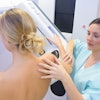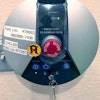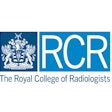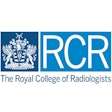
A European Union directive looks set to impose new risk levels for ionizing radiation as part of an effort to lay down basic safety standards for protection against exposure.
The proposed measure consolidates five separate pieces of existing legislation into a single directive, while also updating the risk values to take account of recent research into the impact of radiation on different body tissues. Overall, the European Society of Radiology (ESR) Radiation Protection Subcommittee welcomes the proposal as a useful and needed measure, but there is some fear the changes will lead to more red tape due to, for example, the closer involvement of medical physicists in the process.
There is a demand for medical physicists to play a bigger role in the sector, becoming involved in consultations when hospitals buy new equipment, but Europe has a severe shortage of such specialists and this could lead to bottlenecks and delays.
The changes include a new limit on the dose for the lens of the eye to 20 mSv in a year. This is in line with the April 2011 recommendation from the International Commission on Radiological Protection (ICRP), slashing the dose limit in occupational exposure from 150 mSv in a year. It reflects ICRP research showing how the lens of the eye is a more radiation-sensitive tissue than previously thought, and risks becoming partly cloudy or totally opaque when overdosed with radiation.
Other measures include a limit on the equivalent dose for the skin at 500 mSv in a year (applying to the dose averaged over any area of one square cm regardless of the area exposed), and the limit on the equivalent dose for the hands, forearms, feet, and ankles at 500 mSv in a year.
ICRP says the directive "establishes the basic safety standards for the protection of the health of workers, general public, patients, and other individuals subject to medical exposure against the dangers arising from ionizing radiation."
The latest version of the proposal was published by the European Commission (EC) on 30 May, and still has to be approved by EU member state officials, but that is expected within the next few weeks. Click here to read it. Governments would then have until 2014 to transpose the new requirements and to update current national law.
The EC recognizes that while the use of ionizing radiation in CT scans and other advanced medical imaging tests brings tremendous benefits to the global population, too much radiation can damage cell DNA and lead to mutations that cause cancer. "In normal situations, doses are very low so that there is no clinically observable tissue effect, but there still is a possible late effect, cancer in particular," it notes.
Ionizing radiation in medicine has soared over the last 15 years, raising questions about whether the benefits of all these scans outweigh the potential risks, especially since many diagnostic imaging examinations are often unnecessary. A number of recent studies have linked increases in medical imaging to higher rates of radiation-induced cancers.
The proposed measure also simplifies European rules by replacing five directives with one piece of legislation. These five directives are: Basic Safety Standards, Directive 96/29/Euratom; Medical Exposures, Directive 97/43/Euratom; Public Information, Directive 89/618/Euratom; Outside Workers, Directive 90/641/Euratom; and High Activity Sources, Directive 03/122/Euratom
In addition, the commission says the new measure would fully cover natural radiation sources such as radon, and offer more challenging requirements for managing emergency exposure situations in light of last year's nuclear crisis in Japan.



















